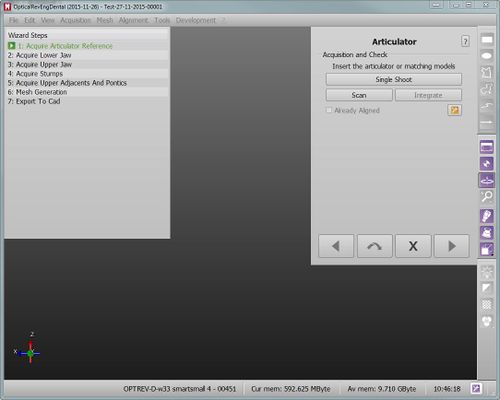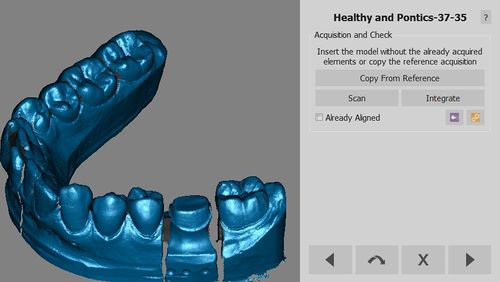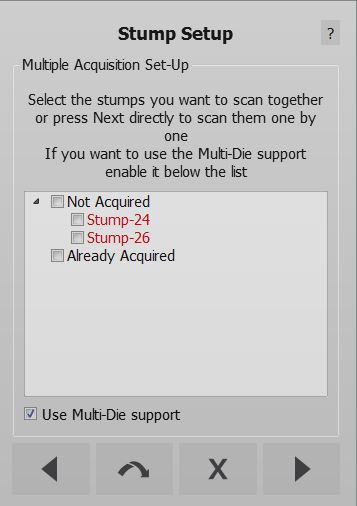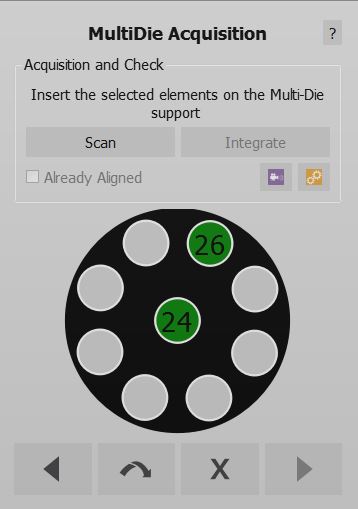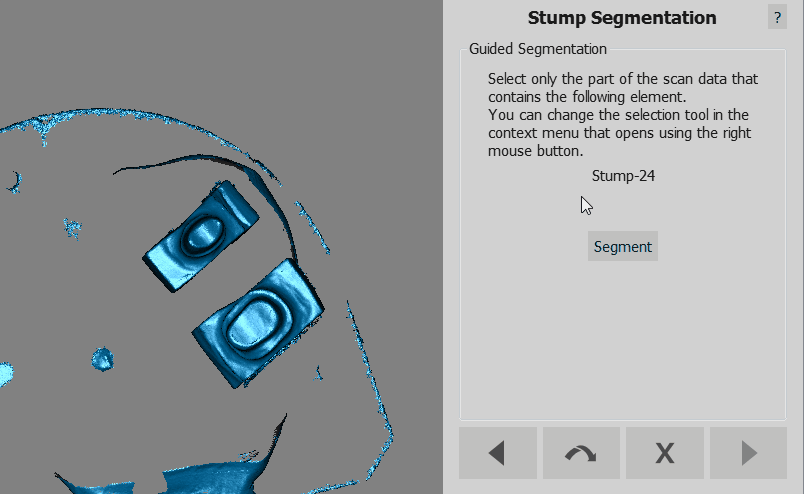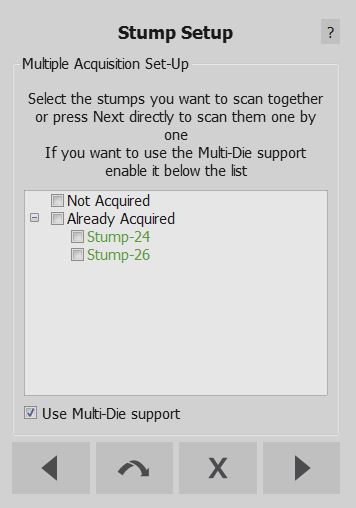Wizard Acquisition
Contents
Scannen durch Wizard
Mithilfe des Wizards ist es möglich, einzelne oder mehrere Objekte in einem einzigen Prozess zu scennen, ein bereits gescanntes Objekt nochmal zu erfassen und alle Scanbilder miteinander zu ergänzen.
Einzelnes Objekt scannen
Jedes Mal, wenn ein Objekt gescannt wird, zeigt ein bestimmter Wizarschritt Folgendes:
- Name des zu scannenden Objekts
- Kurze Beschreibung der zu scannenden Details
- Ein Menü zur Farbenauswahl des Objekts
- Eine Scan-Taste, um den Scanprozess zu starten
- Eine Ergänzen-Taste, um die Ergänzung eines bereits gescannten Objekts zu starten
- Ein Bereits ausgerichtet-Häkchen, das zeigt, ob das Objekt mit dem Rest des Projektes bereits ausgerichtet ist. Es reicht, diesen einfachen
Wizardschritten zu folgen:
- Objektbeschreibung folgen
- Das entsprechende Objekt in den Scanner einlegen
- Auf Scannnen klicken
- Wenn die Scanbildqualität nicht optimal ist, kann man die Scan-Taste ein weiteres Mal klicken, um einen neuen Scanprozess zu starten oder die Ergänzen-Taste klicken, um Daten hinzuzufügen
Erweiterte Funktionen
.
.
.
Von Bezugselement kopieren
Einige Elemente könnten im Laufe des Projekts bereits gescannt worden sein.
In these cases, the software will show an additional button (Copy From Reference) that, instead of starting a new acquisition, will simply make a copy of the previous one.
After the Base Cut step, the software will automatically remove the duplicates from the acquisition.
Multi Acquisition
When acquiring multiple dies or multiple implants, it's better not to carry out a single acquisition for every element.
It is possible to acquire many objects at once.
Just make sure that the objects are completely visible in all their parts and that they are at an adequate distance either on the model holder or on the Multi-Die support.
In these cases, the software will show a Multi-Acquisition Setup step where it is possible to select the objects to be scanned at the same time.
This step will show a list of all the objects that have to be scanned together with the already acquired items. Flag the boxes of the objects that have to be scanned together and, when scanning stumps, flag the Use Multi-Die support option on the bottom of the dialog to use the Multi-Die holder.
With Multi-Die
If the Multi-Die option is selected, the software will set up a specific acquisition for the dies; an image will guide the user in positioning the dies in the Multi-Die holder.
After the acquisition, the software will automatically recognize each single die and return to the Multi-Acquisition Step to allow the acquisition of additional objects.
Without Multi-Die
If the Multi-Die is not selected, the software will acquire the objects and, in the following step, require the user to manually identify each object.
A specific Wizard Step will ask which object has to be identified. The user has to:
- Read from the Wizard Page which object has to be selected
- Select the specific object, using a Selection Tool
- Click the button Segment
- Click the button Next
When the objects are all identified, the software returns to the Multi-Acquisition step. If all the objects have already been aquired, click Next to continue with the Step-By-Step Wizard
Integration
By clicking the Integrate button after an acquisition, the Integration mode will be launched.
